No.1: Classics
Willkommen zur ersten Ausgabe von Boulevard – On Trespassing and Culture.
Boulevard — On Trespassing and Culture ist ein internationales, englischsprachiges Kunstmagazin, das den bisherigen und aktuellen Diskursverlauf in der Street- und Urban Art abbildet. Das Format versteht sich als Ergänzung zu existierenden Magazinen und Publikationen, um die Inhalte über die jeweiligen Landesgrenzen hinaus einem größeren Publikum zur Verfügung zu stellen. Übergeordnete Themen strukturieren die jeweiligen Ausgaben und bieten einen Kontext. Die Schwerpunkte sind Theorie (Reprint), Fotografie, Künstler*innen- und Werkportraits (Cases), aktuelle Publikationen, Rezensionen und Nachrichten (Talk). Boulevard erscheint halbjährlich.
Die Kunsthistorikerin Katja Glaser prognostiziert in ihrem Buch „Street Art und Neue Medien“, das leider nur in deutscher Sprache vorliegt, dass das „Fehlen jeglicher (Kunst-)Kritik, multiperspektivische Kontextualisierung und differenzierte Diskussion langfristig weitreichende Folgen (für die Urban Art) haben wird“. Selbst der Gründer einer zugegebenermaßen konsumierbaren Urban-Art-Messe, Marco Schwalbe, sieht sich gezwungen, sich zu beklagen, dass auf diesem Gebiet eines „kriminell vergessen wurde: der notwendige kunsthistorische Diskurs“.
Einen kleinen Einblick in den existierenden Diskurs wollen wir mit unserer Publikation bieten.
Im Folgenden ein kurzer Überblick über die 80 Seiten der ersten Ausgabe.
TALK
REPRINT
Street Art. Allan Schwartzman
Aesthetic Poverty and Egomania. Oliver Kuhnert
2000 Years of Graffiti or Each Age has the Walls it deserves. Detlef Hoffmann
Graffiti as Sport. Moritz Klein
In the Beginning there was the Word. James Walmesley
Some Kind (of) Stranger. Another One
What is Graffiti? An Attempt at a Philosophical Definition. Ralf Beuthan
Urban Graffiti as Territorial Markers. David Ley and Roman Cybriwsky
CASES
Tony Klicklack. Graffiti´s not Dead
Gen Atem / Miriam. Form is Emptiness
Aris und Toska. But you don´t see Me.
Moses&Taps und Edward Nightingale. 18/1
Talk
Events

The Tag Conference
Sep 2nd – 3rd, somewhere in Cologne (DE)
[…] From Ancient Rome to the subways of New York City, name writing in public space has occurred – and continues to do so – in the most diverse forms. The Tag Conference “aims to foster the discussion about tagging of all eras, about its nature, its meaning and its history, and about the diverse tagging traditions and cultures that exist and have existed. The conference is open to anthropologists, art historians, archaeologists, philosophers, geographers, urbanists, calligraphers, artists and other intellectuals with an interest in the field.” […]
Stencibility
Anarcho street art event in Tartu (EE),
18. – 23.06. 2019

Talk
5TH Urban Art Biennale 2019 Unlimited
[…] We visited this years opening ceremony and had a look at what’s on display. The Völklinger Hütte’s 5th Urban Art Biennale presents, as usual, a diverse mix under the ‘urban’ umbrella. From public installations by ad-busting pioneer OX to a monumentally intimate (if such a thing exists) canvas by figurative graffiti household name Miss Van, real Rammellzees and Futuras from the glorious past, as well as some examples of today’s trendy retro-futurist vapor-wave graphics. Of course you can see stencil art, abstract painting of the ‘graffuturism’ variety and ‘real’ graffiti on canvas by Cope2, besides proper public intervention as for example by Sasha Kurmaz.
This years highlight is, beyond reasonable doubt, an installation by Berlin artists/activists’ collective “Rocco und seine Brüder” who quickly became a well-known name of urban intervention. […]
Talk
Books & Prints

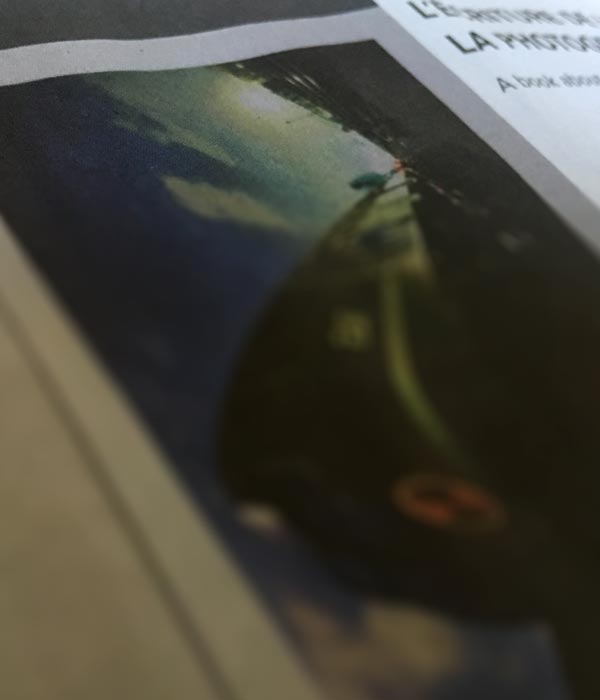
L’écriture de l’ombre, la photographie du graffiti A book about the photography of graffiti, by Bernard Fontaine
[…] Editions Terrain Vague is best known and deservedly adored for their beautifully crafted printwork of artprints and artists books. Now they enter the theoretical, philosophical arena and if it’s with well-conceived volumes like this one, […]
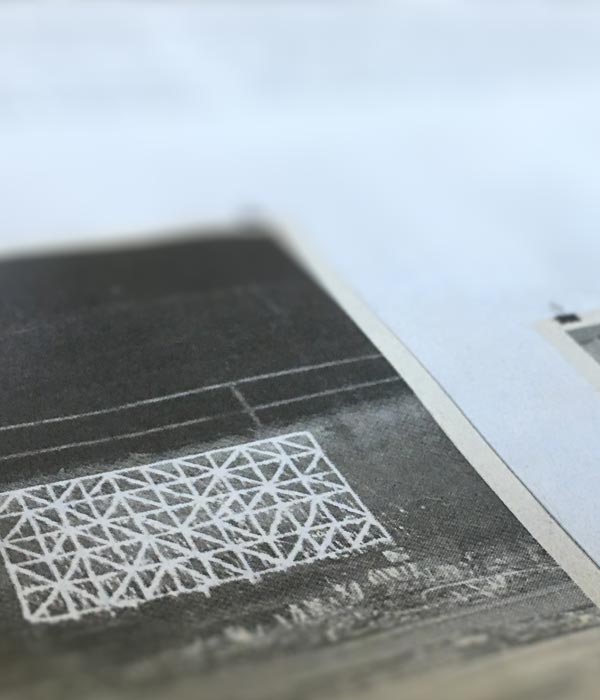
Allan Schwartzman
STREET
ART.


[…] If Modern Artists dedicated their lives to Art, then traditionally trained street artists dedicate their art to Life. These street artists, who viewed the inequities of the art society as part of the inequities of society-at-large, draw our attention to what we look at every day but no longer see, and attempt to improve the visual quality of our world by sharing potent images with us. While public art was used throughout history to inform the world, today´s street art uses the world equally to inform art. […]

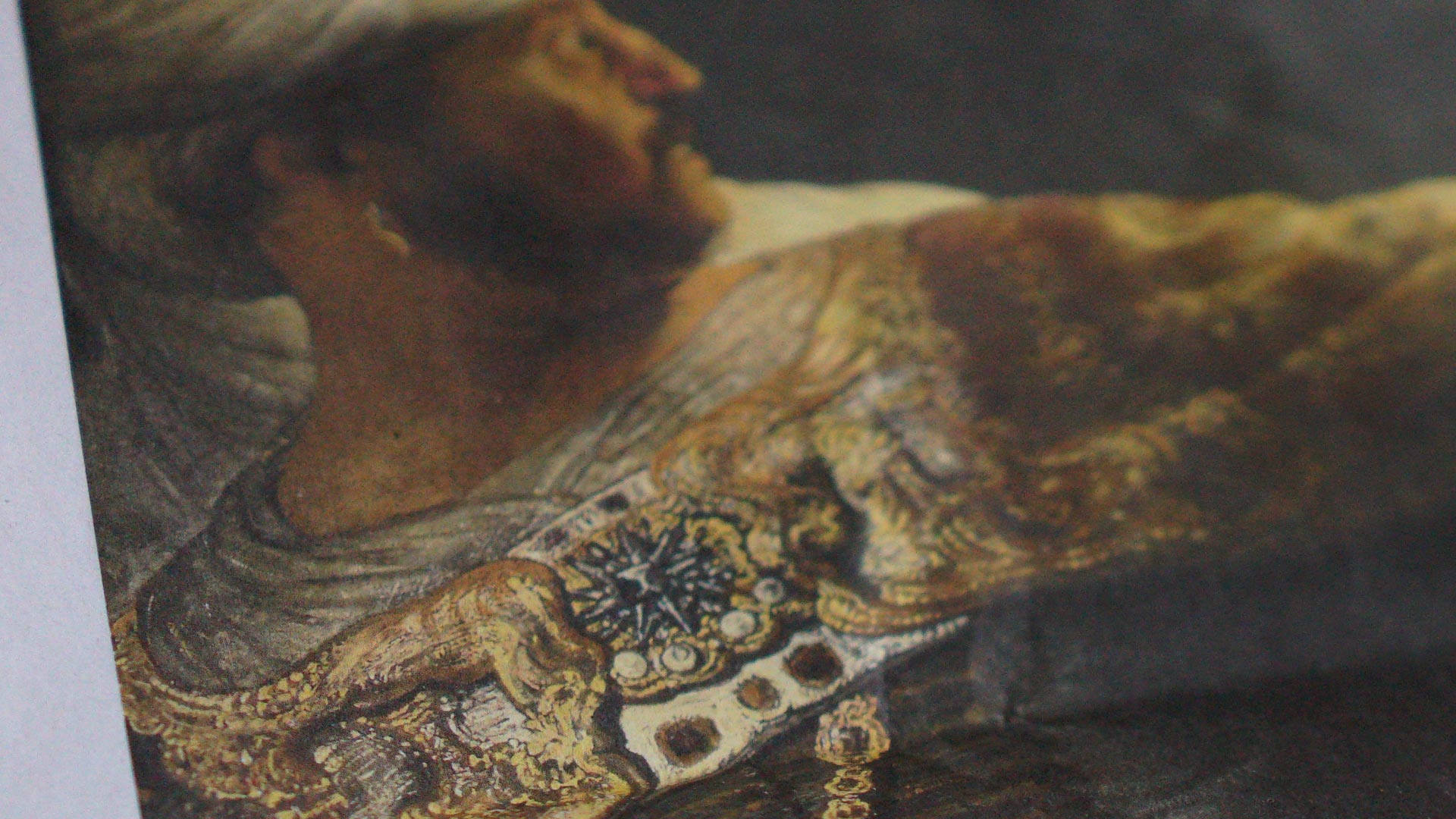
AESTHETIC POVERTY AND EGOMANIA.
[…] Graffiti is blended seamlessly into a world of media and consumption dominated by images, lettering, and names, just outside of the law. The scene there isn’t always less normalized either. Even in terms of self-presentation, it does not harm the brand and image-obsessed consumer world, neither in terms of penetration nor with regards to the aesthetic and action-oriented achievements that are sometimes brought up. Graffiti, to that extent, can be understood as a model of the rest of society, as a parallel world that marches in step, alongside, rather than in a different direction. […]
Detlef Hoffmann
2000 Years of Graffiti
or Each Age has the Walls it deserves.
[…] Graffiti of today have a special relation to the central requirements of society. They vehemently use the right of freedom of expression. As this right can only be used by those who possess the media, the graffiti painter at least take possession of the medium wall. Thus they negate the central category of the bourgeoisie: property. In order to express their opinion publicly, graffiti painter take possession of walls which belong to others. In order to achieve political egality they pretend that there is no economic inequality. […]
Detlef Hoffmann: 2000 Years of Graffiti or Each Age has the Walls it deserves / Zweitausend Jahre Graffiti oder Jede Zeit hat die Wände, die sie verdient, translated by: Adelheid Hinz.

Moritz Klein
Graffiti as Sport.

[…] If one puts the question what the imagery and aesthetic of a graffiti artwork – a tag, throw-up or piece – is, it is hard to get a satisfying answer with aesthetical and the image concerning theoretical categories. It is nearly impossible to find a common aesthetical denomination of all genres. The spectrum what graffiti in general is, is too broad and too heterogeneous. Even a piece in a wild-style manner (that seems more artful, because of the higher level of abstraction in opposition of the standard-lettering) follows more the principles of communication design than of classical painting. […]
[…] The pictorial product of the activity generates no sense out of the self, no aesthetical additional value, rarely an ornamental function. […]


James E. Walmesley
In the Beginning there was the Word.
[…] Where punk gave up the safety pins and school ties of its look to popular culture, graffiti lends its vivid colors and stylized writing. In the 1980s, clothing manufacturers produced graffiti strewn T-shirts with artists such as Dondi and Zephyr contributing their names. Tiffany and Co. released a collection of jewellery designed by Paloma Picasso that was directly influenced by graffiti. Objects as lowly as mugs and notepads were decorated in graffiti style. Trendy east side New Yorkers attended graffiti exhibitions, attracted by the urban image that writing projected. Graffiti was cool and it knew it. However, unlike with other subcultures, writing persisted. Instead of losing its mystery and “otherness,” the public´s curiosity was amplified. There is even evidence to suggest that as the popularity of graffiti writing style in fashion and design increased, so did the popularity of the subculture itself. […]
James E. Walmesley: In the Begining there was the Word, first published in: Beautiful losers – Contemporary Art and Street Culture, by: Iconoclast / D.A.P., New York, 2004
Robert Kaltenhäuser (Another One)
Some Kind (of) Stranger

[…] In the environment of our cities, signs and images are formulated mostly unambiguous to serve as media for their messages. Prohibition signs and traffic guidance systems are dependent on obviousness. Advertising strives for it, sometimes employing a kind of pseudo-ambiguity, commissioned mural painting shows the willingness of the commissioner to decorate and often sadly the unwillingness or inability of the artist to non-patronizing communication. […]
[…] In the realm of the illegal there could be no censorship or control, wouldn´t it be for the voluntary self-control by conformity with ´authentic´ youth culture. Apart from that there´s only the egalitarian censorship of removal by the property-owner, but that one is almost never content-driven. […]
Another One: Some Kind (of) Stranger, first published in: Graffiti Magazine #12, by: Graffiti-Magazine.net, Düsseldorf, 2009
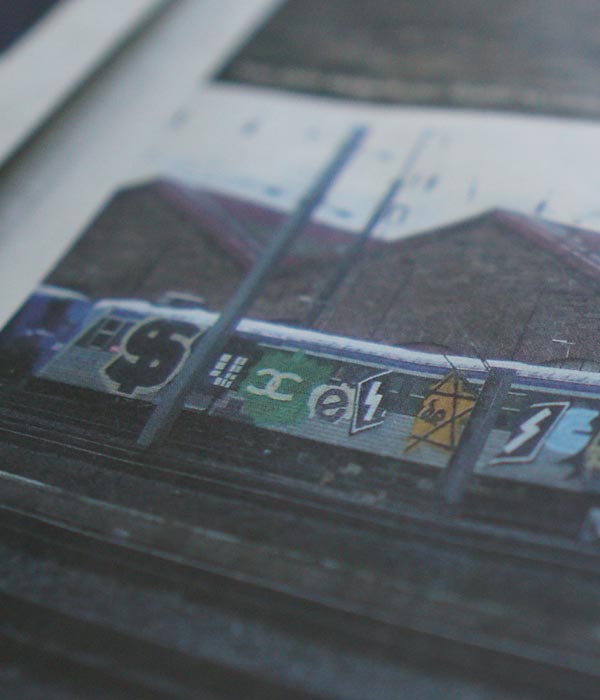
What is Graffiti?
An Attempt at a Philosophical Definition.
[…] The character of a particular “handwriting” which we have mentioned in our example and, even better, the flow of movements which is expressed by the entire body in graffiti, indicates more than just a way of expression which only obeys rules of painting and writing. And in more interesting cases it points beyond the mere announcement of having occupied a territory, if they are not just “pimped” signatures. The peculiar additional value of graffiti comes from the relatedness to the world respectively to its meaningfulness which is rooted in our basal motor functions which bears a historical index without having to refer to anything with a pictorial function. The historical index of graffiti, the signs of urbanity, are tangible in the specific rhythmics, in the combination of powerful large-scale motions and fine motor skills, of tempo, speed up and break-off motions, of turbulences and dilations, without having to be articulated by speech. […]
Ralf Beuthan: What is Graffiti? An Attempt at a Philosophical Definition / Was ist Graffiti? Versuch einer philosophischen Bestimmung, translated by: Adelheid Hinz, first published in: Was ist Graffiti?, by: Königshausen & Neumann, Würzburg, 2011


Urban Graffiti as Territorial Markers
David Ley and Roman Cybriwsky
[…] The contemporary reappearance of graffiti dates from 1965, or perhaps a little earlier. The number of articles and commentaries on graffiti in popular magazines and the New York Times increased from only one over the fifteen-year period, 1950-64, to five in 1969, and then to forty in 1972. The rapid increase in 1972 accompanied an “urban epidemic” in East Coast cities. Popular media often are more sensitive to the public mood than are the social sciences, and as yet there is limited indication of scholarly interest in graffiti. […]
David Ley and Roman Cybriwsky: Urban Graffiti as Territorial Markers, first published in Annals of the Association of American Geographers Vol. 64, #4, by: Association of American Geographers, Milton Park, 1974
Cases
Tony Klicklack — Graffiti´s not Dead
Gen Atem / Miriam Bossard — Form is Emptiness
Aris und Toska — But you don´t see Me.
Moses & Taps und Edward Nightingale — 18/1
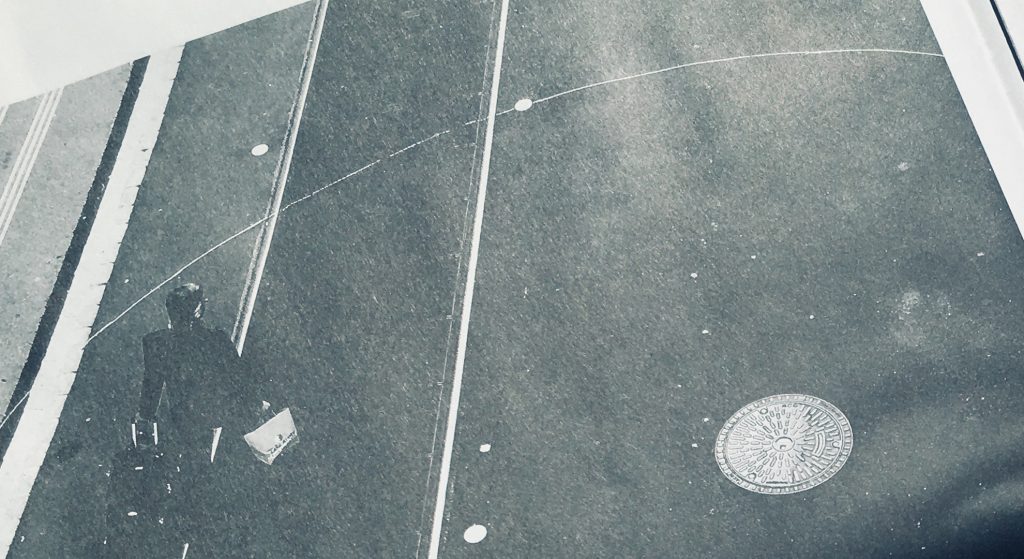

rcrdng
- 0049 69 71 43 113
- info@boulevardotac.net
- Ginnheimer Landstrasse 19 - 60487 Frankfurt / M
